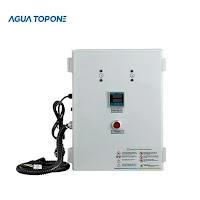UV Disinfection: A Safe and Effective Way to Kill Germs
Ultraviolet disinfection (UVD) is a process that uses ultraviolet (UV) light to kill or inactivate microorganisms. UV light has a short wavelength that can damage the DNA of microorganisms, making them unable to reproduce. This makes UVD a safe and effective way to disinfect water, air, and surfaces.
UVD is used in a variety of applications, including:
- Water treatment: UVD is a common method for disinfecting drinking water. It is also used to disinfect swimming pool water and water used in industrial processes.
- Air purification: UVD can be used to disinfect air in hospitals, schools, and other public spaces. It is also used to disinfect air in food processing and manufacturing facilities.
- Surface disinfection: UVD can be used to disinfect surfaces in hospitals, clinics, and other healthcare settings. It is also used to disinfect surfaces in restaurants, food processing facilities, and other commercial businesses.
UVD is a safe and effective way to kill germs. It does not produce any harmful byproducts, and it is not toxic to humans or animals. UVD is also a relatively energy-efficient process, making it a cost-effective way to disinfect water, air, and surfaces.
How does UV disinfection work?
UVD works by using UV light to damage the DNA of microorganisms. DNA is the genetic material that tells cells how to function. When UV light damages DNA, it can prevent cells from reproducing. This makes the microorganisms unable to cause infection.
The wavelength of UV light that is most effective for disinfection is 254 nanometers (nm). This wavelength is known as UV-C light. UV-C light is absorbed by DNA, and it can damage the DNA in a way that prevents cells from reproducing.
The benefits of UV disinfection
There are several benefits to using UV disinfection:
- It is safe and effective. UVD does not produce any harmful byproducts, and it is not toxic to humans or animals. It is also a relatively energy-efficient process.
- It is broad-spectrum. UVD can kill a wide range of microorganisms, including bacteria, viruses, and protozoa.
- It is fast and easy to use. UVD systems can be installed quickly and easily, and they are easy to operate.
The drawbacks of UV disinfection
There are a few drawbacks to using UV disinfection:
- It can be expensive. The initial cost of UV disinfection systems can be high. However, the operating costs are relatively low.
- It can be less effective in cloudy water. UV light can be absorbed by water, so the effectiveness of UV disinfection can be reduced in cloudy water.
- It can be less effective against some microorganisms. UVD is not as effective against some microorganisms, such as spores.
Conclusion
UV disinfection is a safe and effective way to kill germs. It is a broad-spectrum method that can kill a wide range of microorganisms. UVD systems are easy to install and operate, and they are relatively energy-efficient. However, UVD can be expensive, and it can be less effective in cloudy water or against some microorganisms.
If you are looking for a safe and effective way to disinfect water, air, or surfaces, UV disinfection is a good option to consider.
Some prouducts
 |
| UV Disinfectioners |
 |
| Uv Disinfection System Philips |
Sources

تعليقات
إرسال تعليق